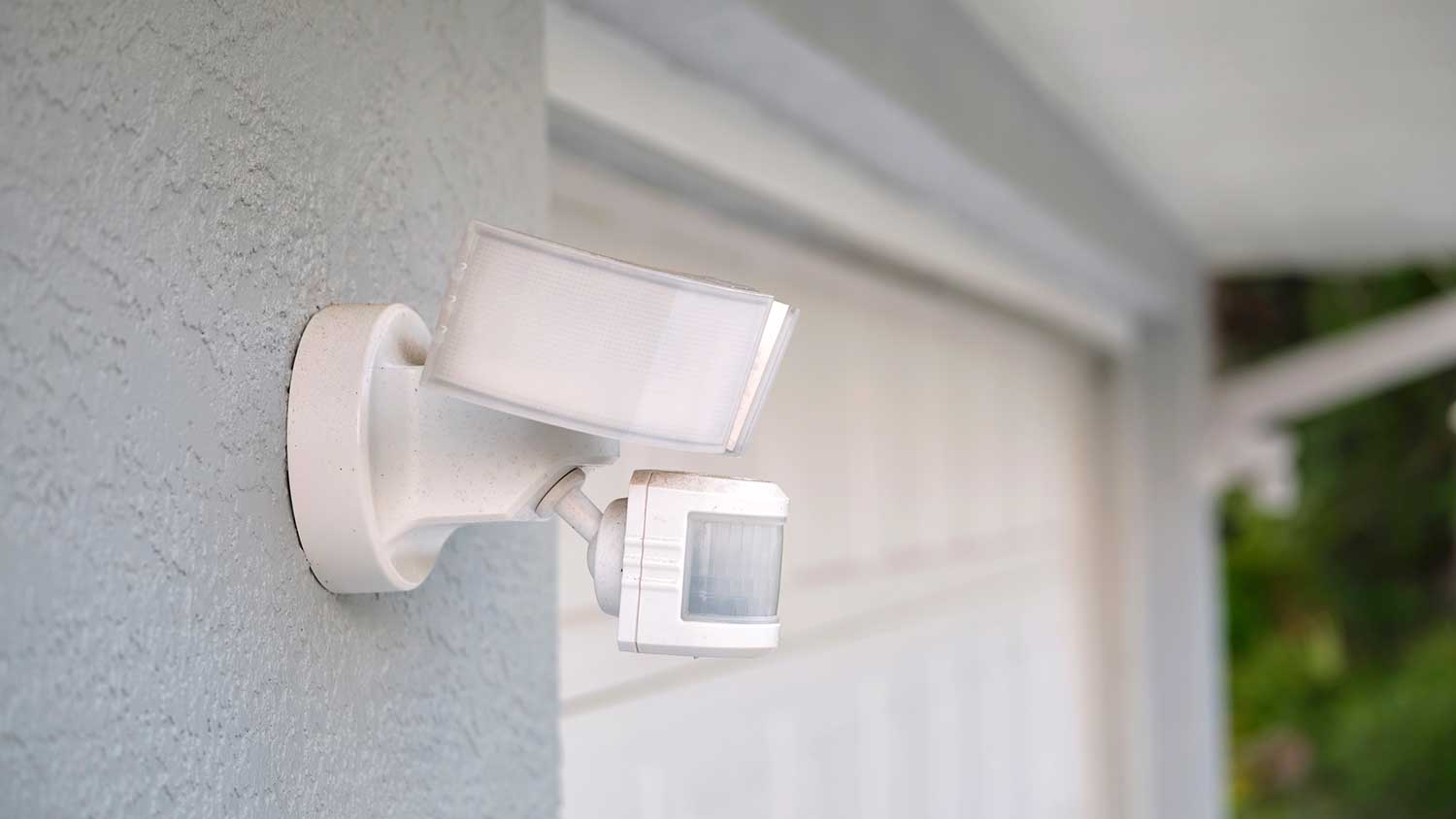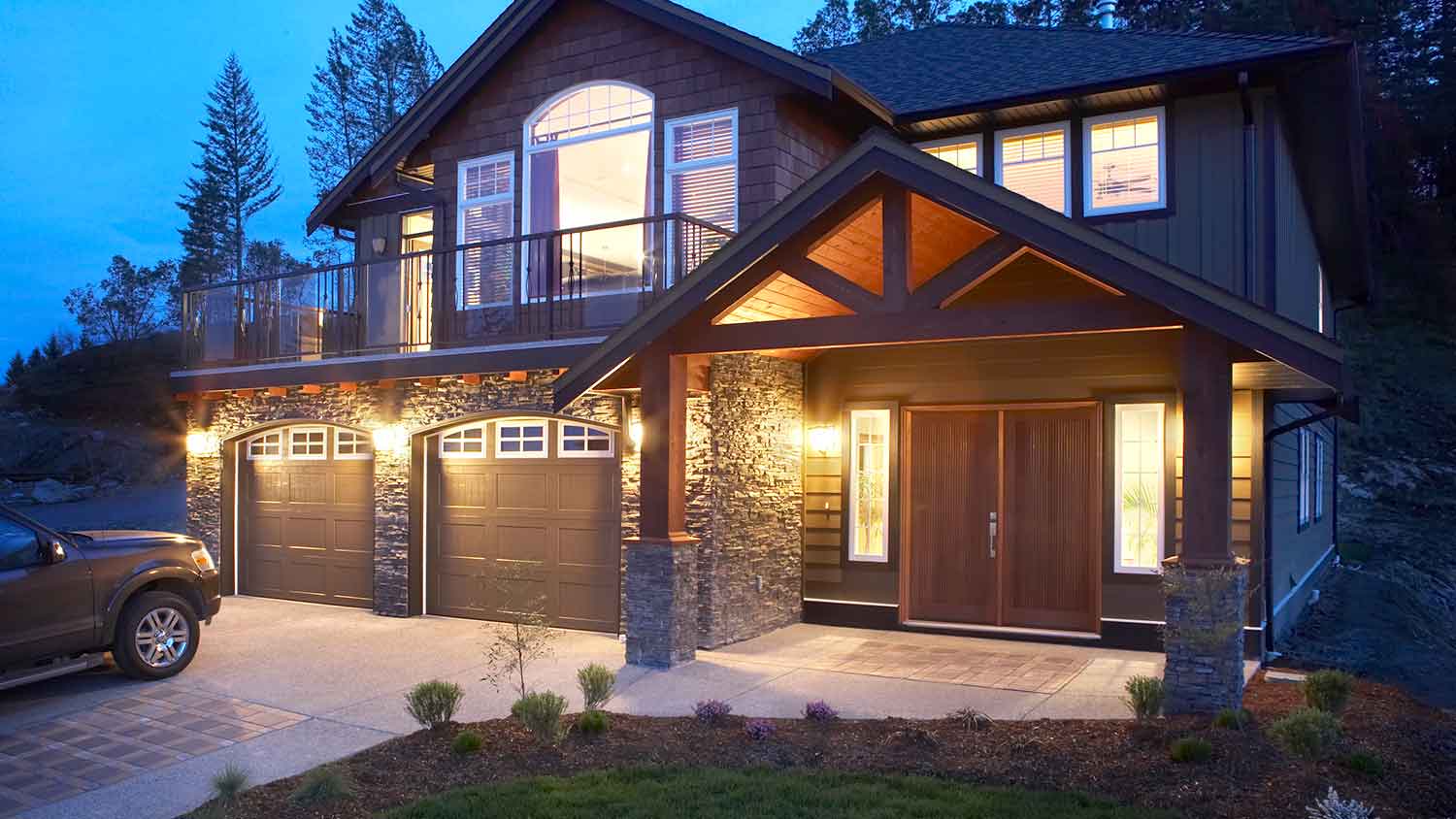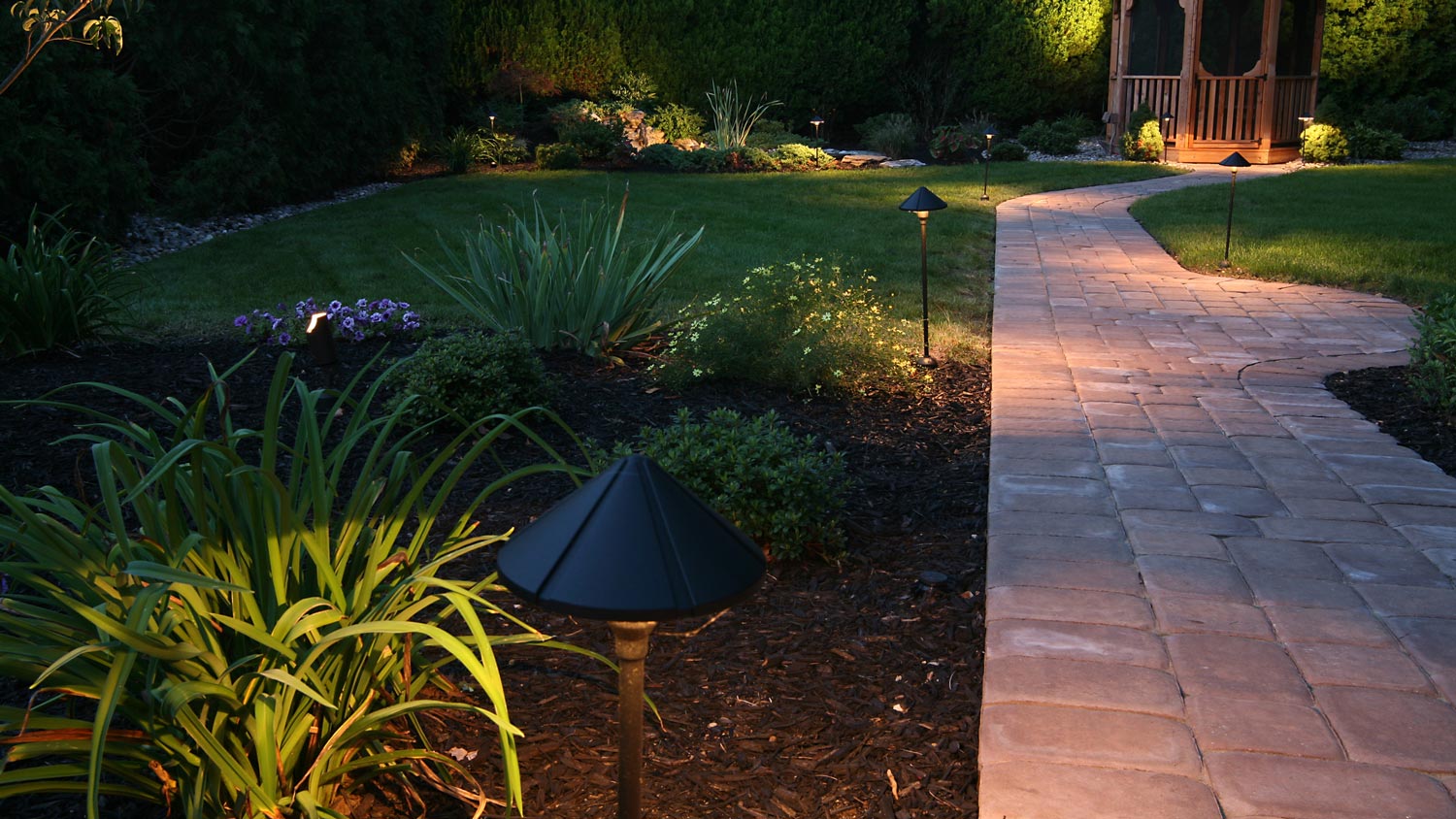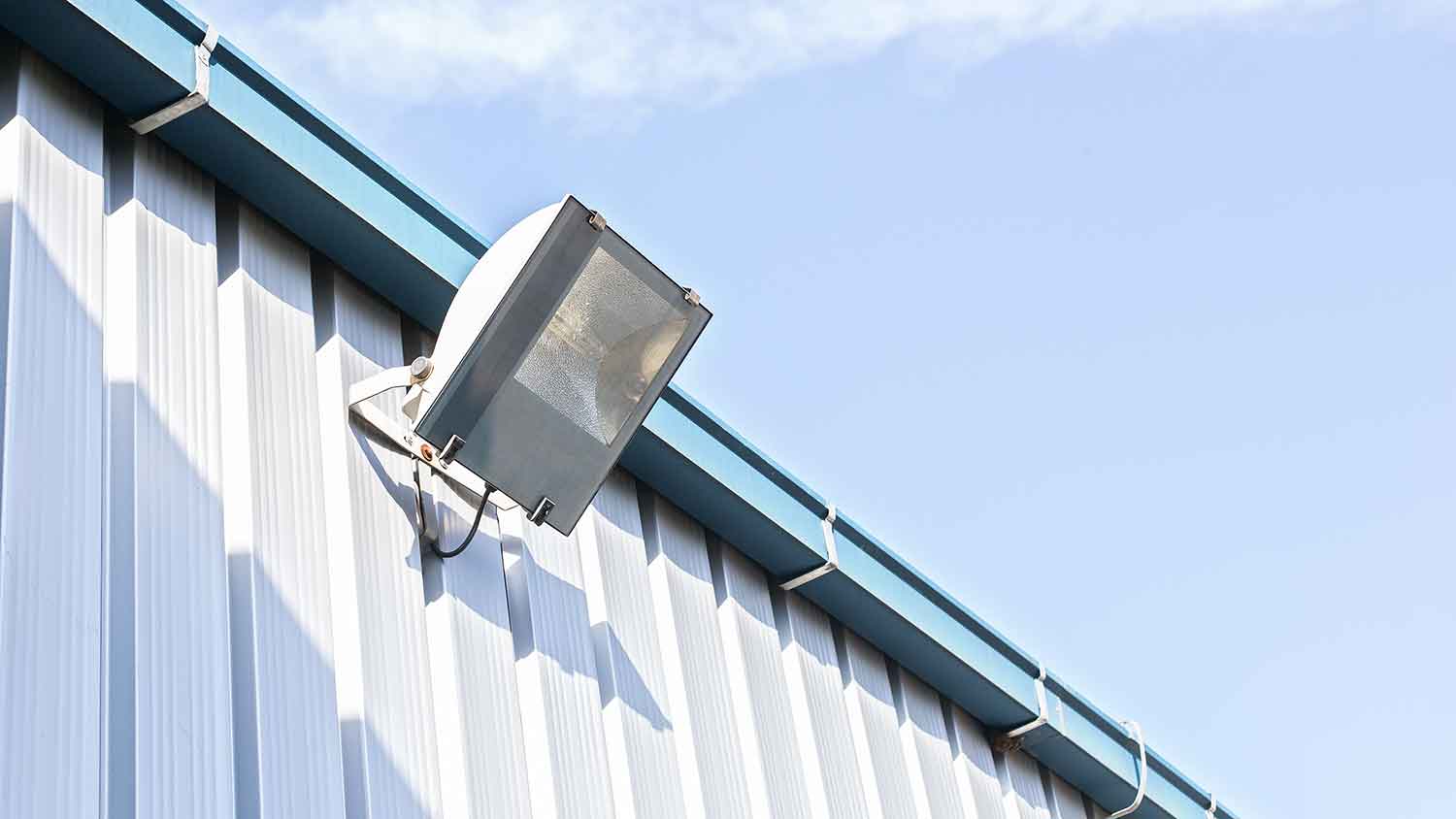5 Different Types of Security Lighting: Which One Is Best for Your Home?
Here we shine some light on the best security options


Bring safety and peace of mind to your home with the right security lights. From motion-sensor options to landscape lighting, you can help keep your home safe and ensure your exterior is well-lit. Outdoor lighting can also help your neighbors keep an eye on your property—whether you’re home or away.
Here are the best types of outdoor security lighting along with their pros and cons.
| Motion-Sensor Security Lights | Timed Security Lights | Floodlight Security Lights | Landscape Lighting | HID Security Lights |
|---|---|---|---|---|
| Unexpected lights can scare away potential intruders | Lights your home all night | Very bright lights | Aesthetically pleasing with curb appeal | Very bright—not always applicable to residential homes |
| Energy-efficient | Can be programmed to work while you are away | High illumination has other benefits, e.g. guests being able to see their way around | Illuminates walkways for guests | Typically used for ranches, farms, and other large properties |
| Cost-effective | Cost-effective | Could be disruptive to neighbors | Might not offer the highest level of safety | Might be restricted by HOAs |
| Might be triggered by weather or critters | Dimmer than other options | Less energy-efficient | Can be costly to install |
Motion-Sensor Security Lights

Motion-activated lights turn on when they sense activity in the area and often catch those with bad intentions off guard. When a bright light turns on unexpectedly, someone might second-guess approaching your home. Motion-sensor lights also alert you that someone is on your property and allow you to spot them easily.
You can adjust motion-sensor lights to ignore the movement of small animals, such as dogs, cats, or squirrels. If you opt for motion-sensor lights, find a set that covers the radius you need.
You can hard-wire motion-detector lights or install battery-operated ones. Installing motion-sensor lights costs about $425, but ranges between $350 and $500.
Pros
Can spook those with poor intentions and encourage them to leave
Alerts you and your neighbors that someone may be on your property
Energy-efficient since they only turn on when there's motion
Cost-effective due to reduced electrical bills
Helps guests and visitors find their way in the dark
Cons
Can be triggered by heavy weather or wildlife
Timed Security Lights

If you want your home’s exterior lit throughout the evening and night, consider timed security lighting. You can set your lights to go on and off at a certain time each day, such as at dusk and dawn. You can adjust the timing based on the season and when it gets dark, so you’re only paying for lighting when it’s needed.
With timed security lights, you can feel secure that your exterior lights are on for the whole night, and any guests who arrive in the evening can find their way in the dark.
Pros
Illuminates your exterior throughout the night
Goes on without you having to be home or turn them on
Energy-efficient and cost-effective
Gives you control of your outdoor lighting
Cons
Often dimmer than other lights
Not as energy-efficient as motion-sensor lights
Doesn’t alert you that someone is on your property
Floodlight Security Lights

Floodlights are bright lights that can help keep your property safe and illuminate the exterior of your home. It’s best to install floodlights in locations where they won't shine into your bedroom or your neighbors’ windows.
Floodlights are great to install above entryways, porches, garages, and the sides of your home. Consider a dimmable floodlight to ensure you can adjust the brightness to your liking. You can use floodlights to illuminate dark areas around your home, such as on the sides or in the backyard.
Pros
Very bright light that deters those with poor intentions
Helps guests navigate your property
Easy to spot activity in your yard or around your home
Can help you see while working on projects or doing outdoor activities
Cons
Can be too bright and impact you or your neighbor's sleep
May not be as energy-efficient
Landscape Lighting

Landscape lighting illuminates walkways, trees, shrubbery, gardens, and retaining walls. It highlights different parts of your landscaping to enhance beauty, function, and home security.
This style of outdoor lighting can help provide safety and make it easy for guests to navigate your property.
Pros
Keeps your property safe and well-lit
Allows visibility for visitors
Enhances the beauty of your front or backyard landscaping
More energy-efficient than floodlights
Cons
Can be difficult to hardwire
Can be costly to install
May not deter those with bad intentions as much as motion-sensor and timed lighting
HID Security Lights

High-intensity discharge (HID) lights are great security lights for large areas of land or fields. They’re commercial-grade lights that can shine light further than floodlights. However, HID lights are very bright and aren't always right for residential homes.
Pros
Shines bright light on expansive pieces of land
Offers security for farms, ranches, and other large properties
Cons
Often too bright and far-reaching for residential properties
Sometimes restricted by homeowners' associations
For help identifying and installing the best security lighting for your home, reach out to local security companies for a quote or consultation.
How to Decide Which Types of Security Lights Your Home Needs
To determine which type of security lights will be best for your home, you should weigh your safety needs, budget, the area of land you need to secure, and other important factors.
You’ll also want to consider your neighborhood and proximity to other homes; some security lights might be very bright, and inappropriate if you live very close to another house, even if you think you’re acting with the best of intentions for you and those who live around you.
Finally, make sure to think about the aesthetics of each option. You might, despite the dimmer illumination, prefer the subtle, elegant look of landscape lighting to other options.
Installing Security Lights Yourself vs. Hiring a Pro
Whether or not it’s worth it to DIY a project like this depends on which type of security lighting you choose. For example, installing stick-in landscaping lighting is easy to do with minimal tools, so you can save a lot without risking anything by doing it on your own. On the flip side, lights that are hardwired to your central breaker or need new wiring require special knowledge and tools to install safely, so you should leave it to a pro if there’s any doubt.
Cost to Install Security Lights
Again, this varies by type of security lighting. The cost of motion sensor lights ranges from $350 to $500 for all the materials and labor involved. Some security systems offer smart lighting for as little as an additional $15 to $90 on top of what you pay for the rest of the features. Pathway lights can cost as low as $50 and up to $1,000 for materials. Pros typically charge a rate of $50 per hour for the labor involved in such an installation.
Frequently Asked Questions
While all security lighting systems offer different benefits, motion sensor security lights have the most advantages and the fewest cons for the average homeowner. While the upfront cost can be hefty, automatic, motion-detected activation will reduce your energy bills in the long run by ensuring the lights are only turned on when necessary. Plus, they’ll ward off intruders and help invited guests find their way onto your property in equal measure.
Although security lighting may not deter a determined burglar, its presence will make your property that much less enticing to would-be trespassers. When paired with other types of home security systems like alarms and surveillance cameras, strong lights will better help you and the authorities identify thieves in the instance they attempt to break in or succeed at doing so.
Security lights perform the best when placed in entry points like garages, front doors, porches, and backdoors. Landscaping lighting like pathway lamps will also make it more difficult to conceal themselves on their way to your home, increasing the likelihood that you or a neighbor will spot them before they arrive.





- 10 Types of Outdoor Lighting to Consider for Your Home
- Should I Install Outdoor Lighting? Read This First
- 10 Outdoor Lighting Trends to Enhance Your Home’s Curb Appeal
- Top 6 Landscape Lighting Solutions That Are Easy on Your Wallet
- How Many Can Lights Per Room? Your Guide to Recessed Lighting for Any Space
- What Are the Best Types of Light Fixtures To Install in Your Home?
- Professional Christmas Light Installation Guide: Costs, Pros & Cons Explained
- How to Save Time and Money on Christmas Lights
- 6 of the Best Types of Porch Lights to Illuminate Your Space
- Shine a Spotlight on Your Exterior With These 11 Outdoor Lighting Tips










